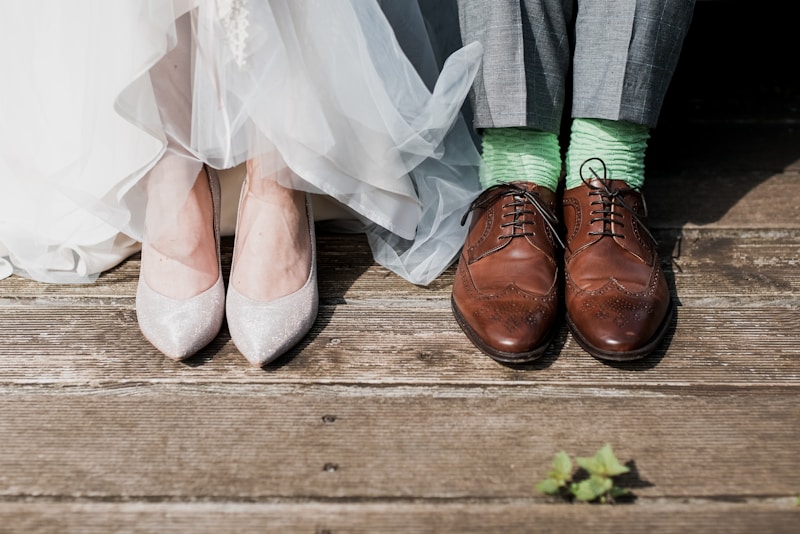Exploring the Color and Fabric Interplay in Wedding Dress Design
Exploring the Color and Fabric Interplay in Wedding Dress Design
Your Ultimate Guide to Wedding Dress Design
Wedding dress design holds a unique place in the world of fashion, combining artistry with tradition. When it comes to selecting a wedding dress, two key elements significantly influence the overall appearance and feel of the gown: color and fabric. In this guide, we will explore the fascinating interplay between color and fabric in wedding dress design, and how it can help convey the bride's personal style, cultural heritage, and the ambiance of the wedding itself.
Understanding the Basics: Color Selection in Wedding Dress Design
The first step in choosing the perfect wedding dress is understanding how colors can transform the look and feel of the gown. Traditionally, white has been the staple choice for wedding dresses, symbolizing purity and innocence. However, modern brides are increasingly embracing diverse colors to express their individuality. Common choices include:
| Color | Symbolism |
| White | Purity and innocence |
| Ivory | Warmth and tradition |
| Burgundy | Romance and elegance |
| Pastels | Softness and lightness |
| Bold Colors | Confidence and individuality |
When selecting the color, brides should consider not only personal preference but also the wedding theme and setting. For example, a beach wedding might call for light, airy colors like blush or baby blue, while a formal evening event may inspire darker, richer hues.
The Role of Fabric in Wedding Dress Design
While color sets the mood, fabric provides texture, structure, and movement to a wedding dress. Different fabrics not only alter the appearance of the gown but also influence its comfort and how it falls on the body. Here are some popular fabrics used in wedding dress design:
| Fabric | Characteristics |
| Satin | Luxurious and smooth, excellent for evening events |
| Tulle | Light and airy, ideal for layering and creating volume |
| Lace | Romantic and delicate, often used for details or overlays |
| Chiffon | Soft and flowing, perfect for a whimsical look |
| Organza | Crisp and lightweight, offers structure without bulk |
Choosing the right fabric is crucial as it affects how the dress behaves in movement, its comfort on the big day, and how it photographs. Lightweight fabrics can create soft silhouettes, while heavier materials lend themselves to structured forms.
The Interplay of Color and Fabric
The true magic happens when color and fabric work together harmoniously. Selecting the perfect combination can elevate a wedding dress from ordinary to extraordinary. For example, a silhouette made of ivory satin can appear opulent, while the same design in a flowing chiffon can convey a dreamy, ethereal quality. Understanding how they complement each other is essential for a cohesive look.

Brides should also consider how they want their gown to reflect their personality. A structured, vibrant A-line dress in taffeta can express confidence, while a soft pastel lace gown reflects gentle femininity. Furthermore, as various fabrics absorb and reflect colors differently, it’s important to consider lighting—natural light and indoor lighting can drastically change how hues appear.
Popular Trends in Wedding Dress Color and Fabric
As we delve deeper into current fashion trends, we notice several inspiring directions in color and fabric choices for wedding dresses in recent years:
- Bold Color Palettes: Many brides are gravitating towards vibrant colors like emerald green, deep blue, or even bright red, which can be stunningly eye-catching.
- Textured Fabrics: Instead of simple satin, consider textured fabrics like brocade or 3D florals that add depth and interest to the design.
- Mixing Fabrics: Layering different fabrics, such as lace over satin or a tulle overlay on a heavier fabric, can create a unique and personalized look.
- Neutral Shades: Soft neutrals like champagne or taupe are gaining popularity for their understated elegance and versatility.
Personalizing Your Wedding Dress Through Color and Fabric
Ultimately, personal style should be the guiding principle in selecting the color and fabric for a wedding dress. It’s about celebrating individuality and creating a gown that feels authentic to the bride's personality. Here are some tips for personalizing your wedding dress:
- Incorporate Cultural Elements: Brides from various cultures might incorporate traditional colors or fabrics that represent their heritage.
- Choose Unique Accessories: Adding a vibrant sash or intricate embellishments can change the whole appearance of the dress.
- Custom Design: Consider working with a designer to create a bespoke gown that reflects your vision.
Cleaning and Maintenance of Wedding Dresses
Another essential factor to consider is the care of the wedding dress post-wedding. Different fabrics require different cleaning methods. For example, satin should be cleaned professionally, while more durable fabrics like taffeta or polyester might be spot-cleaned effectively. Notably, colored dresses require specific attention to prevent fading or alteration due to cleaning products. With proper care, your gown can be preserved beautifully for years to come.
Final Thoughts on Color and Fabric Interplay in Wedding Dress Design
The interplay between color and fabric in wedding dress design is a dance of creativity and emotion. A well-thought-out choice can create dramatic effects that resonate with the bride's personality and the overall wedding theme. Make sure to consider how different fabrics respond to various colors and choose a combination that reflects your unique style.
In conclusion, as you embark on the journey of choosing your wedding dress, remember that the right balance of color and fabric can transform an ordinary gown into a masterpiece that tells your love story. Whether you lean towards the traditional white gown or opt for a colorful and textured design, let your personal style shine through. Happy wedding planning!
